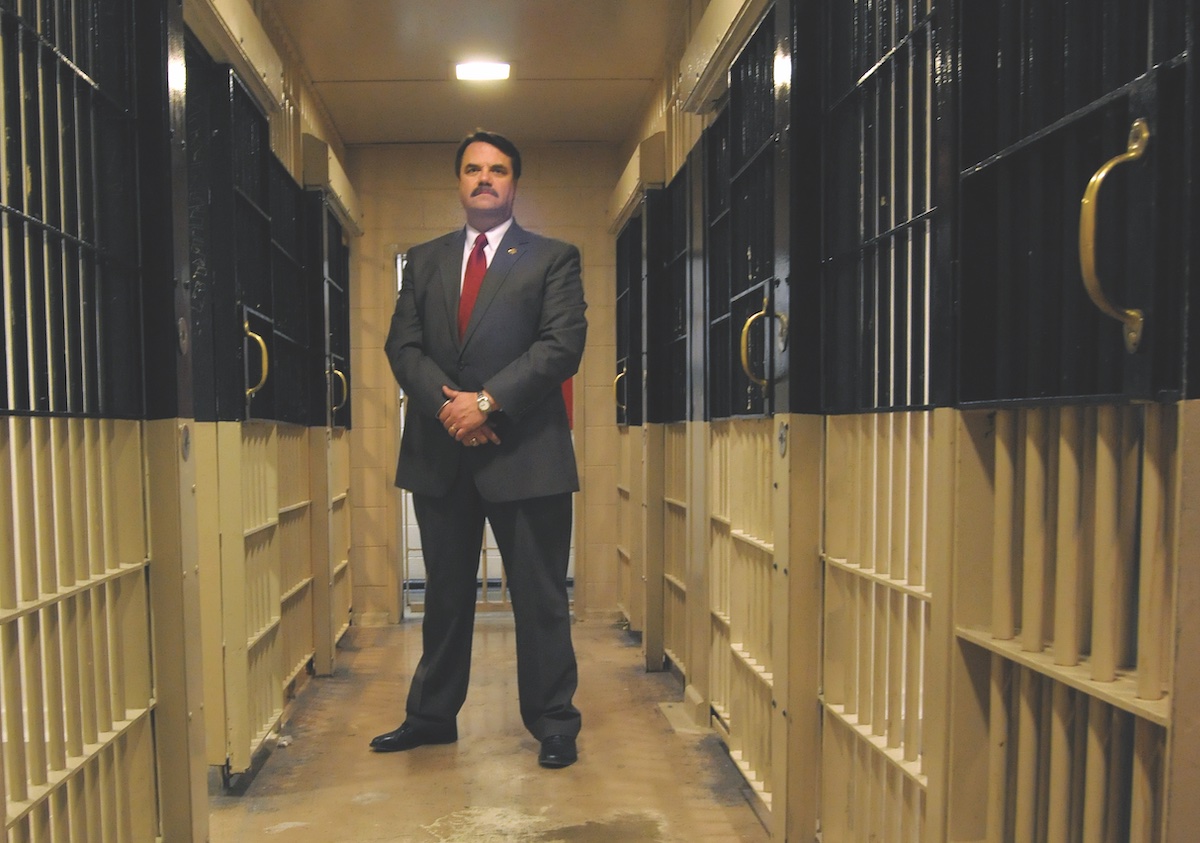Santa Barbara Sheriff ‘Wholly Disagrees’ with Grand Jury Report on Jail Death
Report Called for Independent Review and Investigation of Last Year’s In-Custody Death of Jonathan Paul Thomas; Sheriff Bill Brown Says Recommendation ‘Will Not Be Implemented’

Santa Barbara County Sheriff Bill Brown said he “wholly disagreed” with this summer’s Grand Jury report calling on Brown and District Attorney John Savrnoch to submit the 2022 in-custody death of Jonathan Paul Thomas — a morbidly obese man with a history of serious drug abuse and equally serious mental-health challenges — to the California Attorney General for independent review and investigation. In the terse language proscribed for official responses to Grand Jury reports, Brown wrote of this recommendation “will not be implemented.”
Thomas died of a heart attack 20 minutes after being booked into County Jail on January 11, 2022, after strenuously resisting custody deputies endeavoring to place him in an isolated safety cell which required them to strip Thomas naked. Sheriff Brown expressed confidence in the finding of his own forensic pathologist who concluded Thomas died from a confluence of five causes — obesity, acute methamphetamine toxicity, and a dangerously enlarged heart — in addition to the stress caused by his resistance to the five custody deputies who placed him face-first on the ground in a prone safety hold. The coroner concluded excessive force was not used and “emphatically believes” — according to Brown — that it’s impossible to isolate any one of the five contributing causes as the sole cause of death. The forensic examiner concluded Thomas’s death was “accidental.”
The Grand Jury, however, concluded Thomas might not have died that night had custody deputies not sought to restrain him in the first place. Had the deputies instead sought to deploy the de-escalation skills they would have learned had they received the advanced 40-hour training required of all custody officers hired after 2021, the outcome could have been dramatically different. None of the officers who encountered Thomas that night had received this advanced training, the Grand Jury reported.
Two forensic and cardiac medical experts — from outside the county — interviewed by the Grand Jury concluded that “the restraint applied by the custody officers and JT’s resistance, within reasonable medical certainty, caused JT’s cardiac arrest.” Based on this, the Grand Jury added, “JT’s death would more accurately be labeled as a homicide on the death certificate.”
The Grand Jury report on Thomas’s death was intended as a sweeping critique of the mental health care currently available to inmates in the county jail. The Grand Jury found that every step along the way — from Thomas’s arrest to his incarceration — was fraught with dropped balls and missed opportunities.
Thomas told arresting officers that he was suicidal and wanted to kill himself. But when they took him to the emergency room, neither they nor Thomas told the treating physicians that. In fact, two hours before Thomas was arrested on misdemeanor charges of domestic violence, his partner had notified authorities that Thomas was threatening suicide.
Had this information been relayed to Thomas’s treating physicians, the Grand Jury stated, a more thorough intake would have been conducted.
When Thomas was taken to the county jail, he told the intake nurse he’d been having suicidal thoughts he’d been recently stopped from carrying out. But because the jail’s contract with Wellpath — the physical and mental health care provider with which the Sheriff subcontracts — does not require a mental-health professional on site from 11 p.m. to 7 a.m., there was no mental health professional to deal with Thomas. In that situation, the intake nurse was supposed to have conducted an evaluation, but she reportedly had not been trained to do so.
According to the Grand Jury, Thomas was cooperative until he was informed that he’d been taken to an isolation ward — for his own safety — where he would have to be stripped naked. That’s when he put up serious resistance. Five deputies were deployed to subdue him. Two placed their knee of his lower back; two pinned him down by his shoulders. Cuffs were administered and his hands placed behind his back.
After the clothes were removed, the cuffs were too. But for an additional four minutes, the deputies kept Thomas pinned, reportedly to allow him to calm down. At some point, he made grunting and snorting sounds and complained he couldn’t breathe.
The grand jury reported not having a clear sense of what actions the deputies took in response. Six minutes after the deputies left Thomas in his cell, they returned, alarmed by the lack of motion detected by the cell’s motion detector device. By then, he was dead.
Among the many recommendations made by the grand jury was that mental-health professionals be stationed at the county jail 24/7; the contract needed to be renegotiated, it said, to make that happen. The Ventura County Jail, the Grand Jury noted, had 24/7 coverage by mental-health professionals.
In his response to the Grand Jury report, Sheriff Brown replied, “This will not be implemented.”
He noted that private consulting firm Avocet Enterprises had conducted an analysis of health service staffing levels at the county jail and did not arrive at the same conclusion. “In their review, the experts did not indicate that additional coverage for Mental Health Services was required as the Grand Jury indicates.”
Likewise, Brown rebuffed the Grand Jury recommendations that all custody deputies — not just the ones hired after 2021 — be required to receive 40 hours of crisis intervention training. The Grand Jury argued, “Such training provides officers with tools that can help avoid and/or reduce the use of force. None of these tools were used to control JT without resorting to force.” Brown said such a requirement would impose scheduling and cost challenges to a department already up against the wall when it comes to either.
He partially disagreed with the Grand Jury recommendation that Wellpath intake staff receive training for urgent mental-health challenges, stating, “Wellpath disagrees that there is any causal relationship between the training of its staff and patient JT’s unfortunate death.”
Brown did agree, however, there could be better sharing of information between law enforcement representatives, Wellpath jail employees, custody officers, and county mental-health case workers about people with mental-health challenges in county jail.
The Grand Jury expressed frustration that it could not get clear statistics on the actual volume of inmates in county jail dealing with serious mental illness. Whatever the number is, it appears to be big and getting bigger. There was a 42 percent increase in the number of active mental-health cases in custody throughout California jails and prisons between 2009 and 2019. In Ventura County, the number of inmates with active cases nearly tripled between 2007 and 2020, during which time Ventura County Jail’s population dropped by 28 percent.



